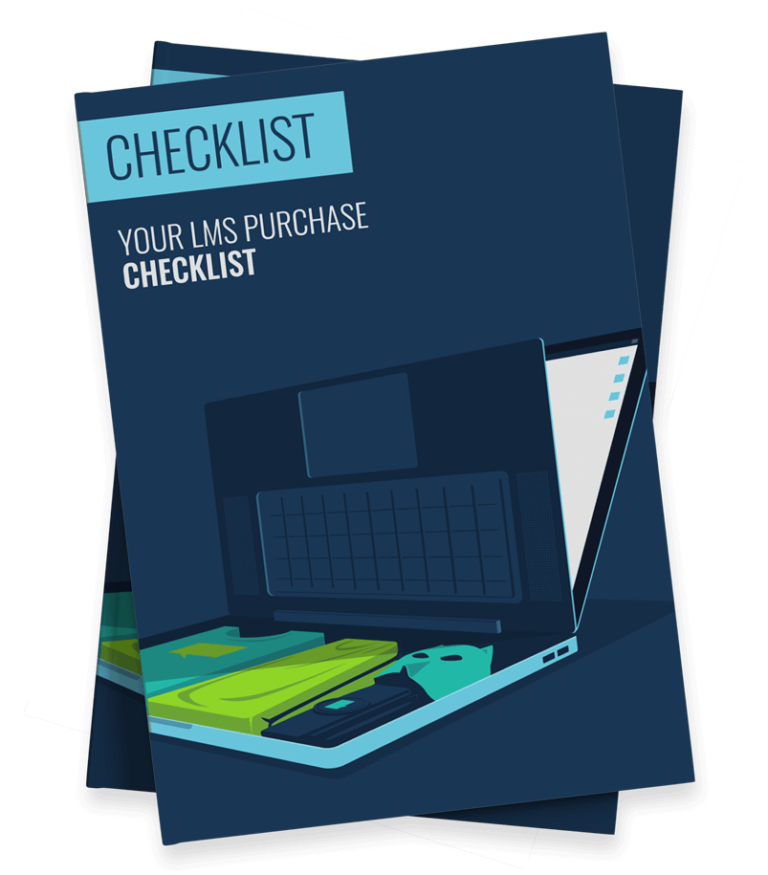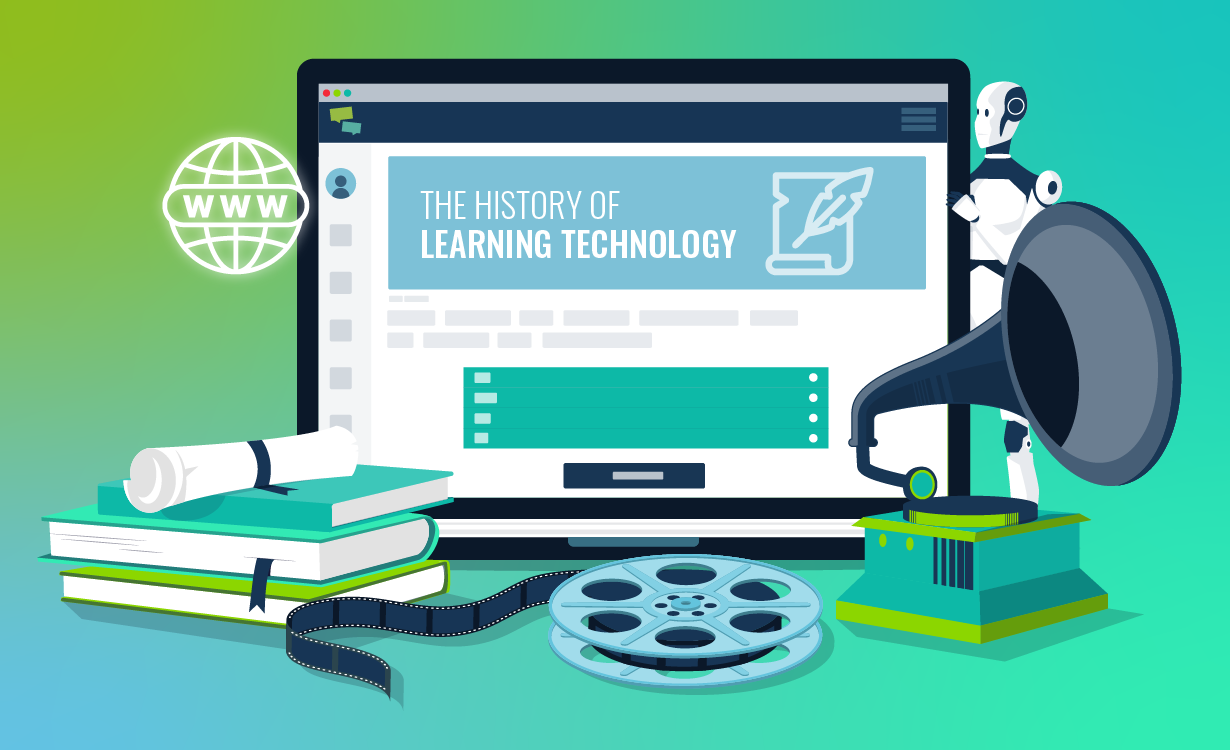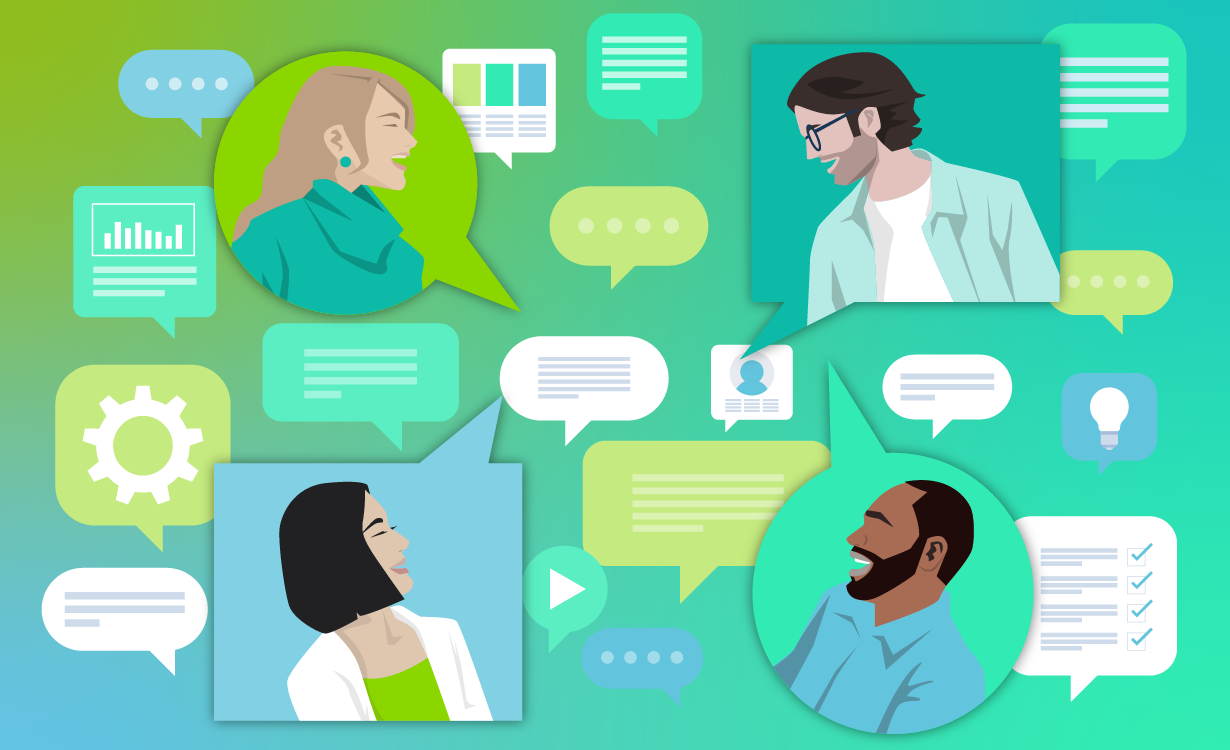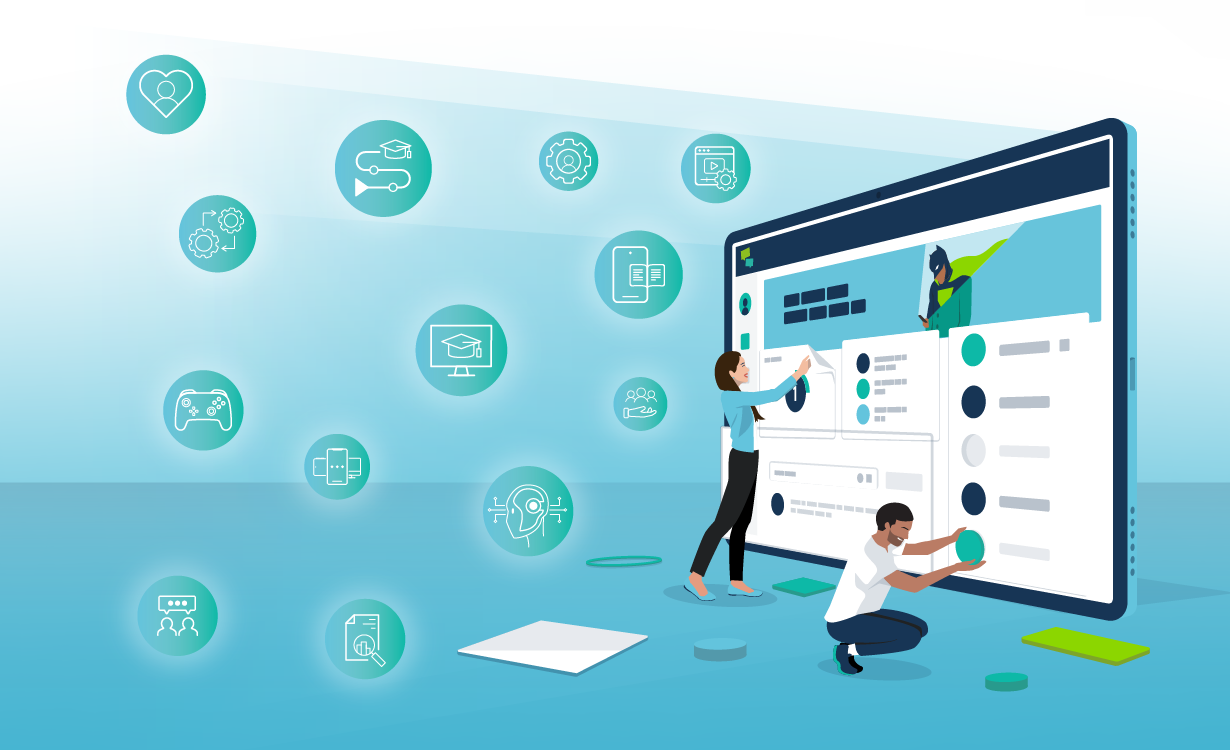Some things are great on their own. Take a burger for example. It’s wonderful as a stand alone dish. But once you pair it with fries, corn on the cob and a cold glass of Coke, you’ve elevated it into a great meal! This is the same premise behind a learning suite.
Online learning providers (like us!) offer various learning technology solutions. Some may specialise and offer a single solution. Others may provide a more extensive range, made up from learning management systems, mobile apps, authoring tools and more. They work great alone but even better together.
In this article, we’ll take you through what a learning suite is, its individual component parts and its benefits! Let’s go!
What Is a Learning Suite?
A learning suite combines a number of learning technology solutions to meet all of your L&D needs. Let’s say you’ve conducted a training needs analysis. Consequently, you now know what’s required for you to supercharge your training initiatives.
You’ve considered other online learning platforms like an LXP and LCMS. However, you’ve decided a learning management system (LMS) is best for you.
But the fun doesn’t stop there. You’ll also need to provide your learners with training content. As such, you may wish to invest in an authoring tool so you can quickly create content inhouse and minimise costs.
Lastly, you may decide that your modern workforce needs to have access to learning on the go. Therefore, you’ve decided on a mobile learning app as well.
Let’s go through each of these individually to help you understand how they link together to create your learning suite!
What Is an LMS?
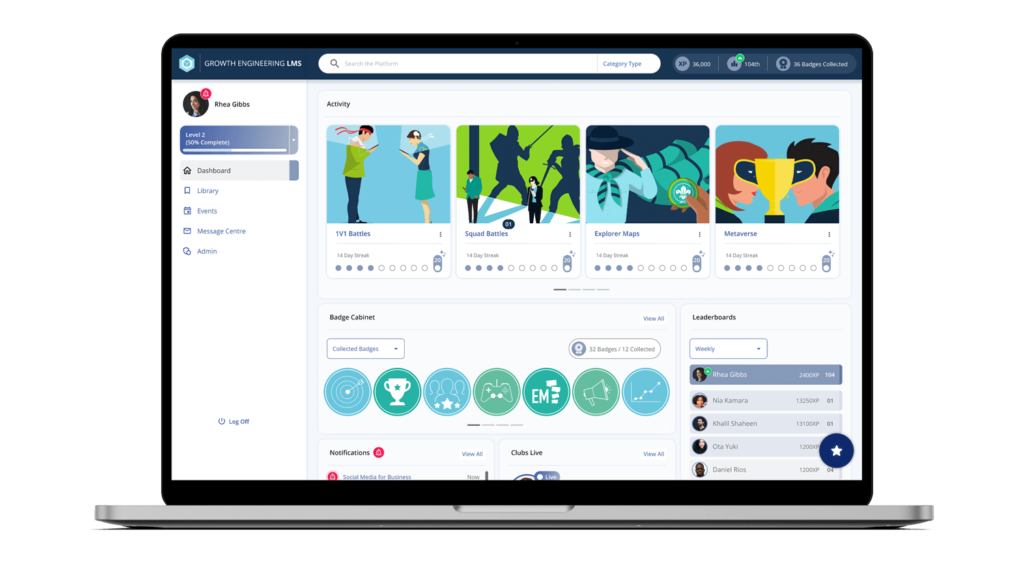
If you think of a learning suite as a solar system, the LMS is the sun. Your LMS will be the centrepiece of your training programme, with other systems playing a supporting or enhancing role.
The formal definition goes something like this: a web-based platform that supports the digital distribution and analysis of learning and training experiences.
The price of an LMS will vary by vendor and how many users you want to set up. There’s a good chance it’ll eat up a considerable portion of your L&D budget.
As it happens, the current LMS market is expected to be worth a whopping $37.9 billion by 2026, with a compound annual growth rate of 19.1%.
However, this platform often makes for a smart investment. A modern LMS is able to perform a variety of tasks. For example, on Growth Engineering LMS you can:
- Host documents, videos, eLearning and more
- Assess, quiz and survey your learners
- Track learner progress and generate reports
- Manage classrooms and virtual events
- Provide a space for social learning between learners
- Sell courses and curricula
- And gamify the experience to increase engagement
And that’s just scratching the surface! Some of this functionality can also be provided in the form of an app. Same capabilities, different form.
Let’s dive into Growth Engineering Learning App a bit further!
What Is a Learning App?
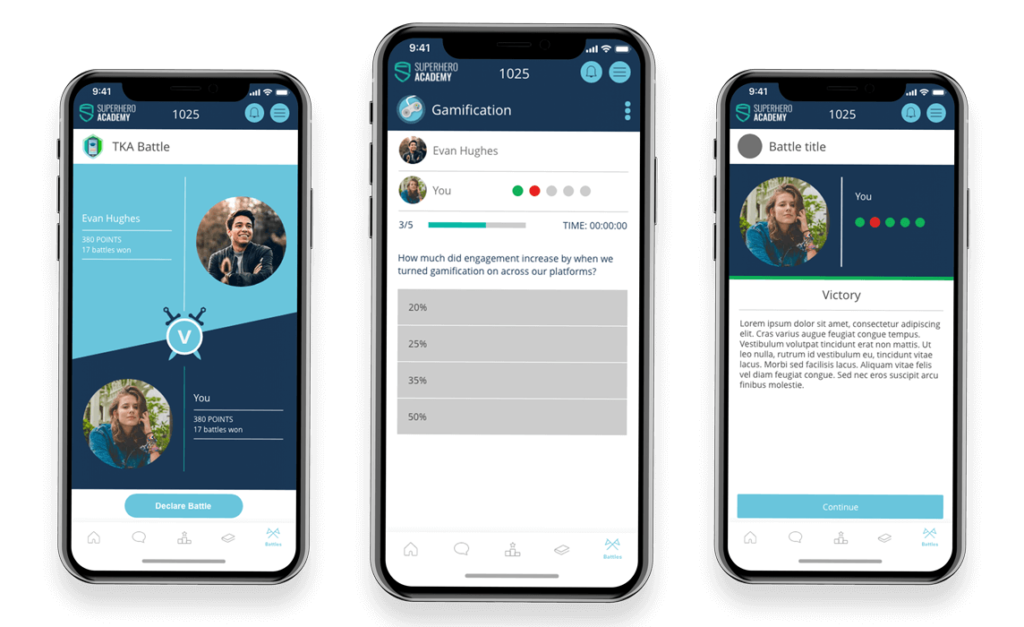
A learning app takes all the best bits of an LMS and puts them into your pocket. Did you know that on average, we check our phones every 12 minutes?
Some of these interactions are to engage in mobile learning. In fact, a staggering 52% of learners complete some mobile learning as soon as they wake up!
All learning apps are different. However, they all aim to provide a mobile friendly learning experience. And whilst they may share some features in common with an LMS, there are likely to be plenty of differences as well.
For example, you can use a learning app that’s web-responsive. This is when a responsive web-based solution is placed within an app framework. This lowers the cost of production and speeds up development. But there are drawbacks too. For instance, you may notice slower performance and you won’t be able to utilise mobile features (like GPS or your phone camera) within the environment.
On the other hand, you could get a native learning app. These apps are built specifically for mobile. This allows you to take advantage of mobile features and gives you more design freedom. Growth Engineering Learning App is a great example of this. Key features include:
- Microlearning units: As with an LMS, learners can access learning opportunities through a content library. However, mobile learning is often consumed in bitesize chunks rather than large units. Spaced repetition in this way has been shown to improve memory retention by 800%!
- Enhanced social features: As Growth Engineering Learning App is a native app, you can make use of mobile features such as the camera for live streaming. Learners can join the live streams of other learners or hosts to deepen their knowledge and connections.
- Online/offline sync: This ensures that learners always have access to eLearning content. Learners download eLearning whilst they have an internet connection and are able to complete it at their convenience — regardless of their connection status. The app then synchronises the completed work when they next have a connection.
All of this exists within a fully customisable environment. Learners are able to download the app from the App Store or Google Play Store, just as they would do any of the other apps they use in their day-to-day life.
Learning on an app has been proven to improve productivity by 43% and courses are completed 45% faster. Speaking of courses, it’s time to discuss the final piece of the learning suite puzzle: the authoring tool.
What Is An Authoring Tool?
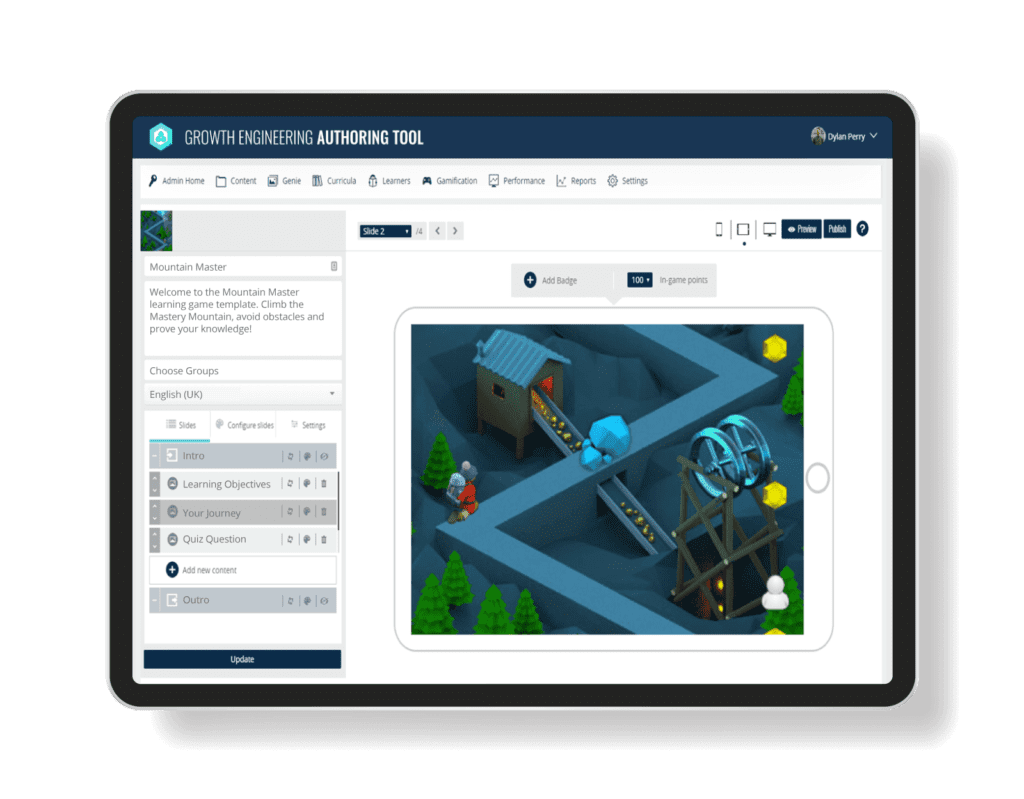
A good authoring tool is the backbone of your learning suite. After all, learners can’t complete content on your LMS or app if you haven’t created any!
An authoring tool puts the power of creation into your hands. You can control the process from idea conception to release.
Growth Engineering Authoring Tool comes with a multitude of features such as:
- Authoring capabilities
- Various package exports
- Instant language translation
- Game mechanics
- Game templates
With the right authoring tool, your instructional designers can create content at the speed of need. Consequently you’ll cut down on labour hours and save yourself approximately £3,315 per learning objective met!
Combining Your Elements into a Learning Suite
The platforms we’ve mentioned so far work well alone, but can perform wonders when combined together. After all, collectively they provide you with everything you need to create, share and track content across different user devices.
And there’s more! You could also build out your learning suite by bolting on other systems, such as:
- Learning Record Store (LRS): An LRS is an application that ‘stores’ learning records. This makes learning data portable, so it can be easily pushed into other systems in the future.
- An analytics or business intelligence system: These platforms allow you to collect, measure and analyse your learning data. As a result, you’ll earn a deeper understanding about your learning environment and be able to optimise it accordingly.
- An external eLearning content library: You don’t have to create your content library. There are multiple providers out there who can create content for you. You’ll be able to import their content, or integrate with their platform to access it.
- Other resource providers: You can collaborate with other companies to provide whatever else you need. This can range from images for modules, videos or further training documentation.
- A web conferencing tool (for vILT): You may also want to integrate with a conferencing tool to provide virtual instructor-led training through your platform.
Unfortunately, not all learning suites are one-size-fits-all. It’s possible that you like part of one learning suite and part of another learning suite. Luckily, we live in the 21st century and you should be able to integrate them!
Let’s move onto an example of a learning suite in more detail – ours!
Growth Engineering Impact Suite
When you combine Growth Engineering LMS, Growth Engineering Learning App and Growth Engineering Authoring Tool, what do you get? Growth Engineering Impact Suite.
Our Impact Suite combines all three of our award-winning solutions into one. This way, you have full control over all areas of your learning journey. Let’s go over some of the other benefits!
Benefits of a Learning Suite
1. More Efficient
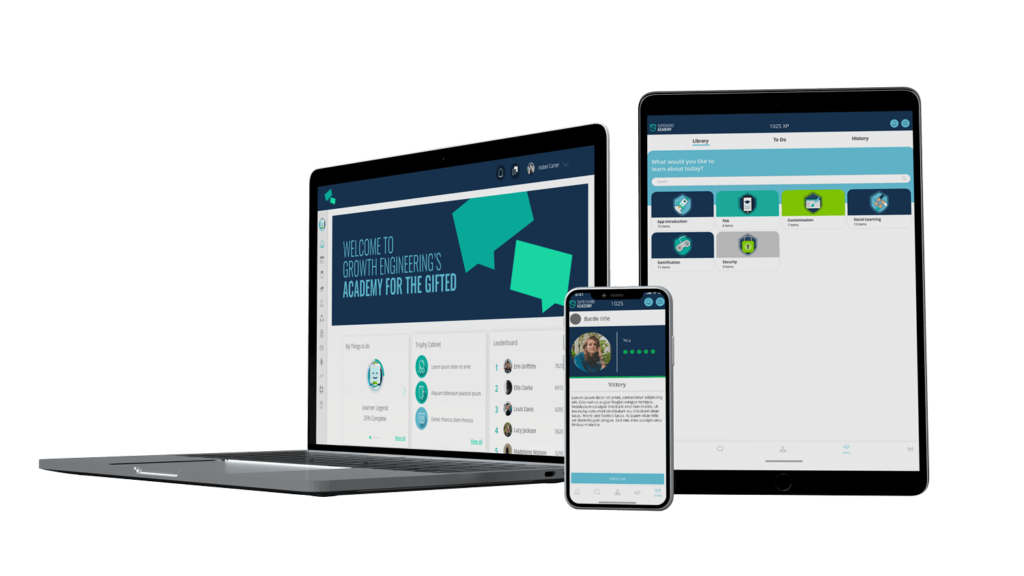
An interconnected suite of solutions that speak to each other leads to more opportunities and better outcomes.
For example, in most cases, you’d typically export content from your authoring tool and manually add it to your LMS. However, with a connected suite, you can publish content to your app or LMS directly from your authoring tool — just like magic!
Furthermore, you can sync up your learning and social data across your LMS and app. The data is pushed between the two platforms to guarantee a continuously cohesive learning experience.
You also will have one login for the app as well as your LMS, with user permissions consistent across both. Integrations lead to efficiency!
Why does this matter? Well, an efficient learning culture makes employees 50% more likely to stay and 11% more profitable!
2. One Vendor
It can be time consuming having to search around for multiple vendors. That’s before you even factor in the time taken to meet with each one, explain your needs, review contracts and more.
By using one vendor it allows you to build a stronger relationship. This allows for quicker response times as they’ll really understand your solution and needs. Additionally, it allows for faster access to product releases as they can just add them across your learning suite.
Lastly, with a learning suite there’s only one learning curve. You don’t need to take the time to onboard your learners onto multiple platforms. Once again, this will save you time and allow you to focus on improving your learning outcomes.
3. One Budget
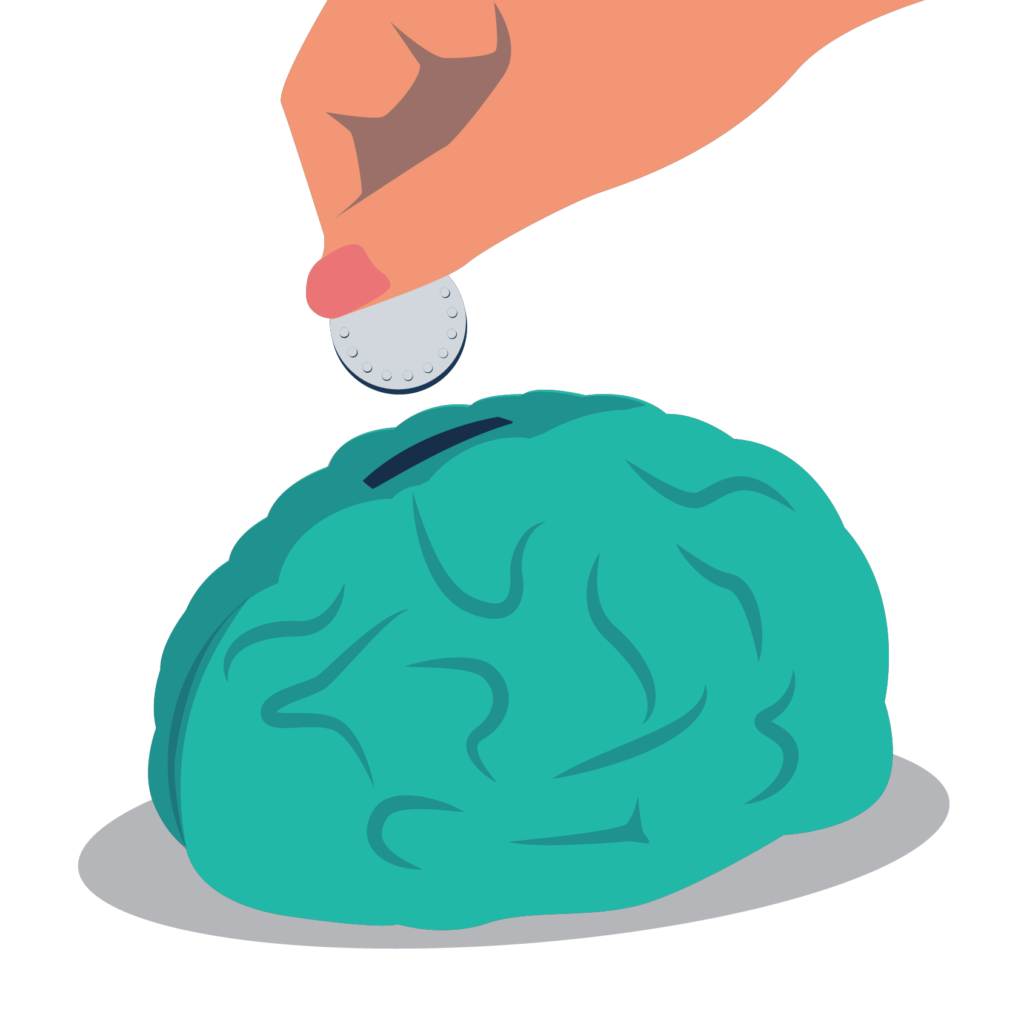
It will be much easier to secure leadership buy-in if you present the business case for a learning suite rather than a bunch of different products. After all, it makes it a lot clearer for senior management to understand and review.
With a learning suite, calculating your eLearning ROI is also a lot more straightforward. You get all the information you need from one vendor. Then it’s up to you to roll-out a high impact initiative and calculate your return.
In addition, you’re more likely to get a better price when purchasing a learning suite. After all, if you’re buying individual solutions from various vendors, the price will likely add up pretty quickly.
However, there’s a good chance you’ll get a healthy discount when purchasing a whole learning suite from the same vendor!
4. One Contract
Once you find learning solutions that you’re happy with, there’s a lot of different admin involved. You’ll need to figure out terms, licences, invoices and more.
This can end up being quite demanding. In fact, research has found that SMEs spend an average of 16 hours per week just on admin.
With a learning suite, there’s only one contract involved. This significantly reduces administration time. Now you can claw back some of those hours and spend them on other important areas of your business. Like making the most of your learning suite!
5. Access to Further Support

Unfortunately, 47% of vendor relationships fail. This is often due to poor communication and a lack of support.
As we said earlier, having a learning suite with one vendor allows you to create a deeper relationship. Consequently, when something goes wrong, you know that they’ll be there to help you.
With Growth Engineering Impact Suite, you have access to benefits that extend beyond your learning suite. This includes, but is not limited to, off-the-shelf content, a dedicated Customer Success representative and access to a learner community.
As a result, the relationship will grow and flourish over time. You’re provided with ongoing support, lightning speed problem resolution and more.
6. Solves Various Use Cases
Having to switch between platforms with different processes for different challenges can be tiring. With a learning suite, there’s no need. After all, the whole suite is designed to solve all your training challenges and every use case that comes to mind.
For example, Growth Engineering Impact Suite is able to help with every aspect of the learning process. From content creation and release, to assessing learners and tracking progress. It can also handle a variety of different challenges, including:
- Product training
- Employee onboarding
- Employee training
- Customer training
- Partner training
- Sales enablement
Did you know that employees waste over 21 days per year in the workplace? Some of this time is spent trying to find the right platform for their tasks. A learning suite removes the confusion and lays it all out in the same place.
Final Words
Hopefully by now, you can see how powerful learning suites are. In fact, they are designed to help solve all your learning needs.
With one vendor, you’re more likely to receive quicker support, faster buy-in from senior management and a better price.
Growth Engineering Impact Suite is delivering award-winning results for our clients. If you’d like to learn more about how it can solve your learning challenges, then please get in touch with us!

